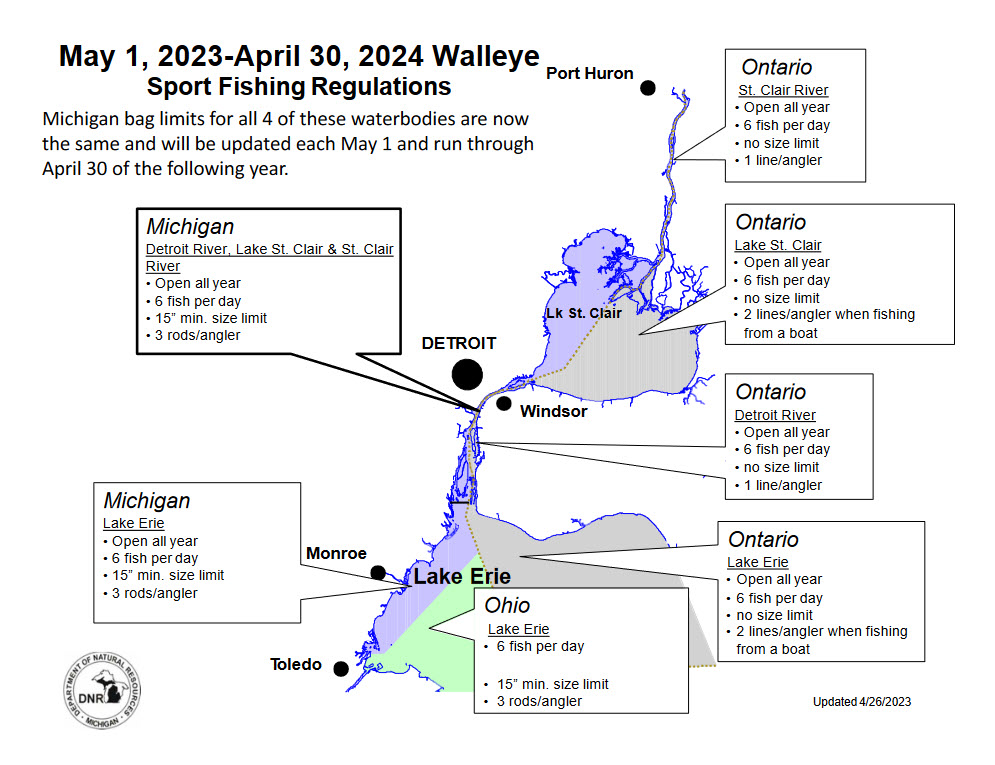Walleye sport fishing regulations for southeast Michigan available now
Walleye bag limits set at 6 fish per day on St. Clair River, Lake St. Clair, Detroit River and Lake Erie.

Anglers fishing for walleye on the St. Clair River, Lake St. Clair as well as the Detroit River and Lake Erie want to be aware that new bag limits were recently released by the Michigan Department of Natural Resources. Michigan bag limits are updated each year on May 1 and those regulations apply until April 30 of the following year. 
Michigan walleye fishing regulations for all four waterbodies are now the same and are as follows:
- Six fish per day
- Open all year
- 15" size limit
- Three rods per angler
Please see the 2023 walleye sport fishing regulations PDF for the map and full explanation of the regulations. In addition to the document, DNR regulations can be found at the DNR website and in the Michigan DNR Hunt Fish mobile app. The 2023 Michigan Fishing Guide is also available online. Please direct any questions about the regulations directly to Michigan DNR.
Michigan Sea Grant helps to foster economic growth and protect Michigan’s coastal, Great Lakes resources through education, research and outreach. A collaborative effort of the University of Michigan and Michigan State University and its MSU Extension, Michigan Sea Grant is part of the NOAA-National Sea Grant network of 34 university-based programs.
This article was prepared by Michigan Sea Grant under award NA22OAR4170084 from the National Oceanic and Atmospheric Administration, U.S. Department of Commerce through the Regents of the University of Michigan. The statement, findings, conclusions, and recommendations are those of the author(s) and do not necessarily reflect the views of the National Oceanic and Atmospheric Administration, the Department of Commerce, or the Regents of the University of Michigan.



 Print
Print Email
Email

